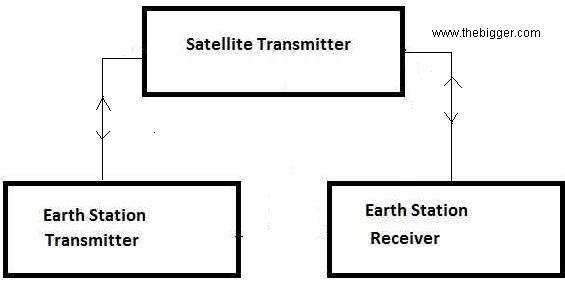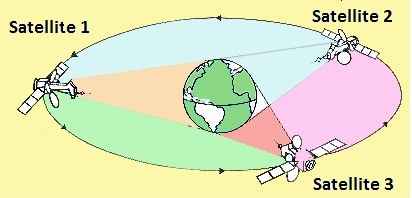In satellite communication, signal transferring between the sender and receiver is done with the help of satellite. In this process, the signal which is basically a beam of modulated microwaves is sent towards the satellite. Then the satellite amplifies the signal and sent it back to the receiver’s antenna present on the earth’s surface. So, all the signal transferring is happening in space. Thus this type of communication is known as space communication.
Two satellites which are commonly used in satellite communication are Active and passive satellites.
Passive satellites: It is just a plastic balloon having a metal coated over it. This sphere reflects the coming microwave signals coming from one part of the earth to other part. This is also known as passive sphere. Our earth also has a passive satellite i.e. moon.
Active satellites: It basically does the work of amplifying the microwave signals coming. In active satellites an antenna system, transmitter, power supply and a receiver is used. These satellites are also called as transpoder. The transmitters fitted on the earth generate the microwaves. These rays are received by the transponders attached to the satellite. Then after amplifying, these signals are transmitted back to earth. This sending can be done at the same time or after some delay. These amplified signals are stored in the memory of the satellites, when earth properly faces the satellite. Then the satellite starts sending the signals to earth. Some active satellites also have programming and recording features. Then these recording can be easily played and watched. The first active satellite was launched by Russia in 1957. The signals coming from the satellite when reach the earth, are of very low intensity. Their amplification is done by the receivers themselves. After amplification these become available for further use.

Microwave communication is possible only if the position of satellite becomes stationary with respect to the position of earth. So, these types of satellites are known as geostationary satellites.
What are the requirements for a satellite to be geostationary?
1. Its revolutionary direction must be same as that of the earth, i.e. from west to east.
2. The time period of satellite’s revolution must be same to the time period of the rotation of earth along its polar axis, which is equal to 24 hours.
3. The equatorial plane of earth must be co planar with the orbit plane of the satellites revolution.
The name given to the orbit of the geo-stationary satellites is synchronous orbit. Due to this geo-stationary satellites are also called as geo-synchronous satellites. Geo-synchronous orbit is at a height of nearly 36000km from the surface of earth.
These orbits are capable of giving a successful communication link between two stations present on the earth. These satellites can handle communication up to large distances. But it is impossible for a single geo-stationary satellite to cover the whole earth and provide a communication link. Due to curvature of earth the stations will be out of sight after covering some distance. If we want to cover the whole earth then we have to put three satellites onto the geosynchronous orbit. These satellites can cover the earth if all are inclined at an angle of 120o to each other.

www.TheBigger.com
It is a nice post...
ReplyDelete